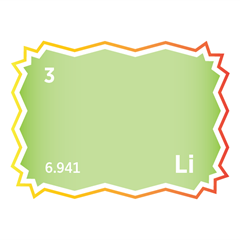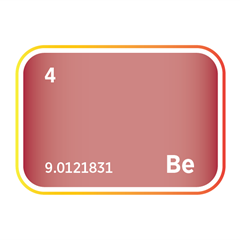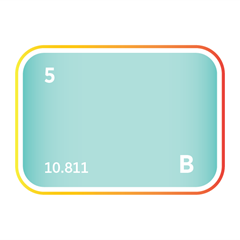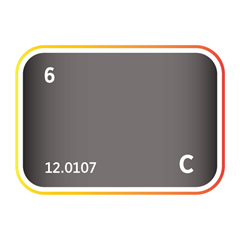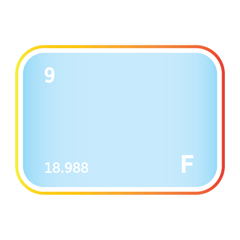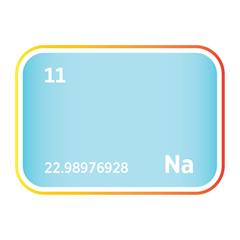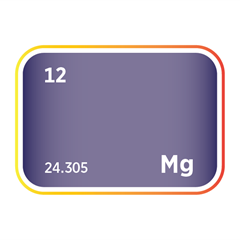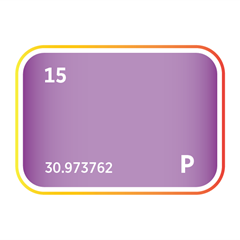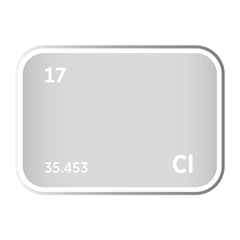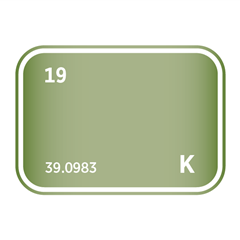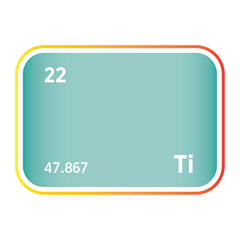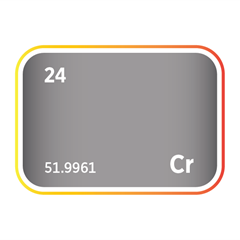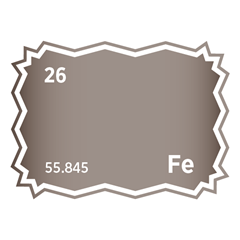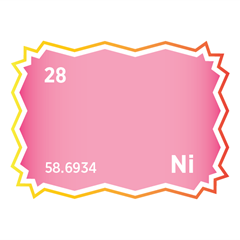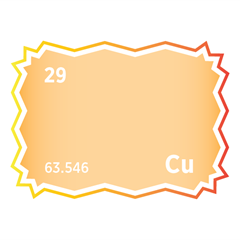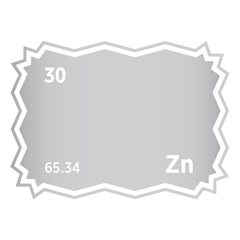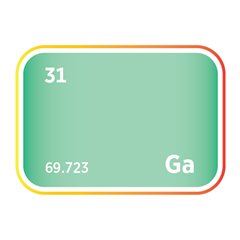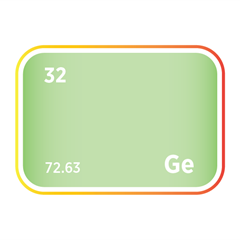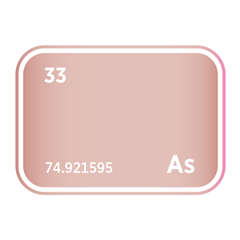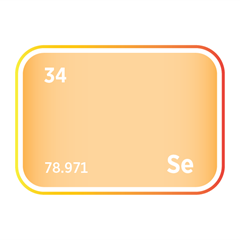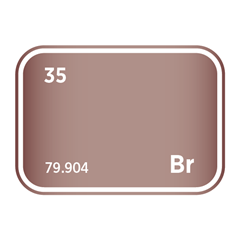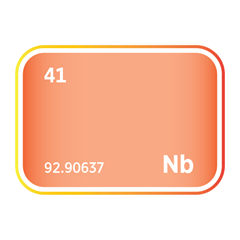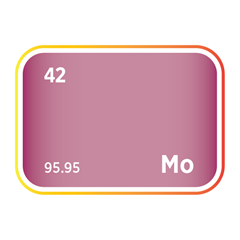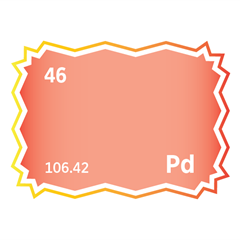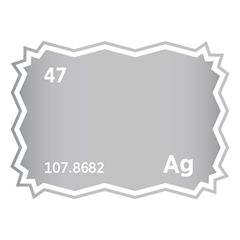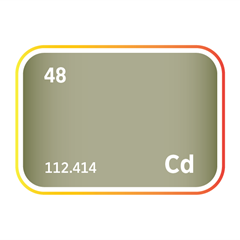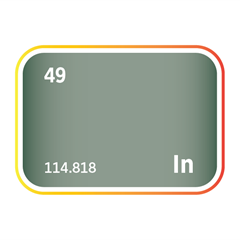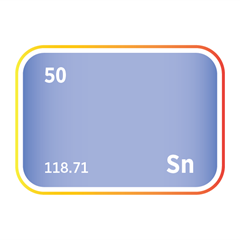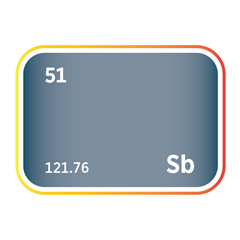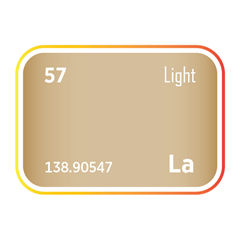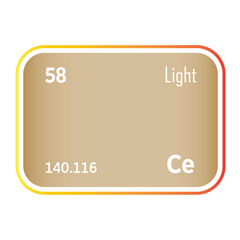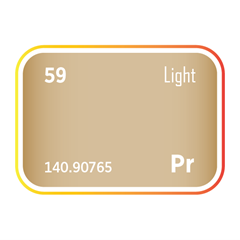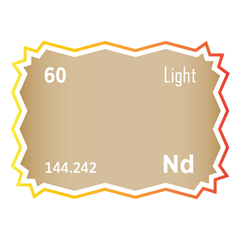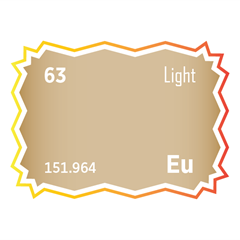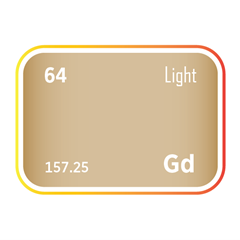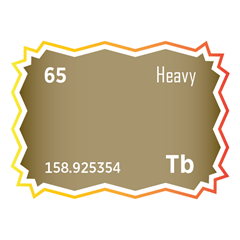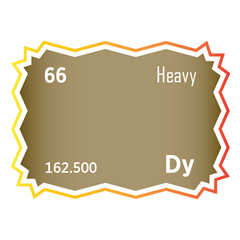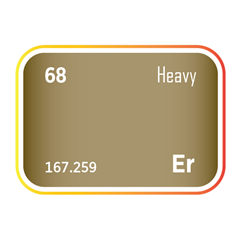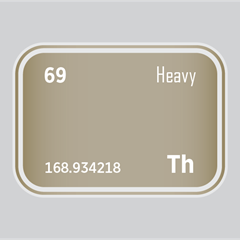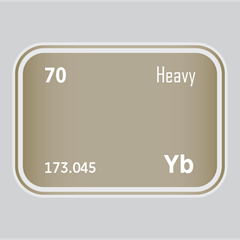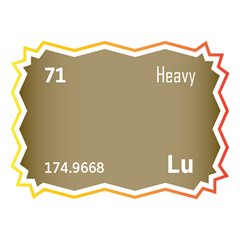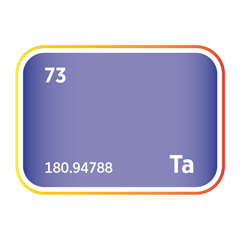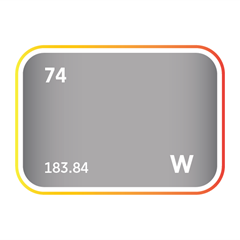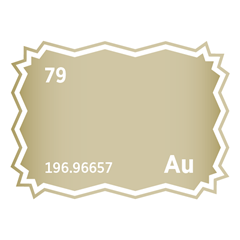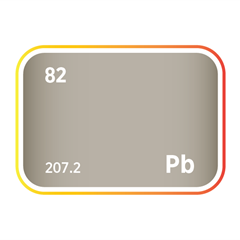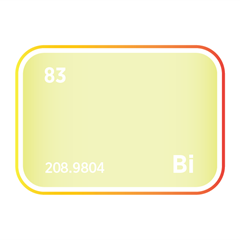Smartphones and Touch Screens
Critical minerals, policy, and the energy transition
Critical Minerals Powering your Smartphone
Smartphones represent the pinnacle of modern innovation, housing cutting-edge technologies that rely on various critical minerals. These minerals are pivotal in enhancing performance, durability, and sustainability, thereby enabling the creation of high-performance devices. Each smartphone component relies on specific minerals from the display to the battery to function optimally. In the ever-evolving landscape of electronic technologies, these critical minerals are indispensable for maximizing performance and sustainability. The demand for high-performance devices necessitates a range of minerals that contribute to various functions, such as photovoltaic film coatings, touch screens, casings, displays, charging systems, and more. Understanding these critical minerals' pivotal role and their supply chain dynamics is paramount for driving innovation and ensuring a sustainable future in the electronics sector. As global policies and market dynamics shift, staying informed about these materials and their applications will be key to navigating the energy transition and harnessing new opportunities.
Critical Minerals used in smartphones
Key Minerals and their Roles
Glass
Aluminium, Silicon, and Potassium are fundamental in manufacturing high-quality glass, providing structural integrity and thermal stability. Silicon dioxide (silica) is the primary component, while aluminium oxide enhances durability and chemical resistance. Potassium, often added as potassium oxide, strengthens the glass through ion exchange, making it more resistant to scratches and impact. However, high-purity silicon supply constraints and reliance on regions like China pose challenges for the industry.
Glass polishing
Lanthanum, cerium and praseodymium are critical rare earth elements used in polishing compounds to produce the ultra-smooth, high-strength glass surfaces essential to smartphones and other advanced electronic devices. These materials enhance optical clarity, scratch resistance and overall surface quality, key to delivering the durability and visual precision expected in touchscreen technologies. Beyond consumer electronics, these elements are vital in polishing applications for precision optics, architectural glazing and scientific instrumentation. However, global supply remains heavily concentrated in China, which controls most production and processing. This dependence creates strategic vulnerabilities for manufacturers seeking secure and stable access to high-performance glass polishing materials.
-
Lanthanum plays a critical role in formulating and polishing high-performance glass, particularly for smartphone displays and consumer electronics, where optical clarity and mechanical durability are essential. Including lanthanum oxide (La₂O₃) in glass enhances its chemical resistance, protecting it from degradation caused by alkalis and harsh environmental conditions. This is particularly important in everyday touchscreens exposed to skin oils, moisture and repeated handling. Lanthanum also significantly raises the refractive index while minimising optical dispersion, improving light transmission and reducing chromatic aberration. These optical benefits are crucial for mobile device screens and high-precision lenses used in cameras, microscopes and other scientific equipment. In addition, lanthanum increases the mechanical strength and microhardness of glass, making it more resistant to scratches and wear during use and polishing. Its contribution to thermal stability further supports its use in demanding electronic and industrial environments where resistance to heat-induced deformation is required.
-
Cerium oxide (CeO₂) is widely regarded as the leading abrasive in glass polishing, offering unmatched performance, consistency and efficiency. Its fine particle size and inherent hardness allow for precise removal of surface defects, such as scratches, pits and micro-cracks, resulting in a smooth, high-gloss finish. This is vital for smartphones, tablets, and high-end displays to achieve the sleek, flawless appearance consumers expect. Cerium oxide also improves optical clarity by eliminating minute irregularities in the glass surface while preserving material thickness, which is especially important for delicate components and thin substrates. Its chemical stability ensures compatibility with various glass types, supporting its use in everything from architectural glazing to precision optical systems. The ability of cerium to produce distortion-free, high-transparency surfaces has cemented its role as the global standard in glass polishing.
-
Praseodymium is more specialised yet strategically important in glass polishing and enhancement. Praseodymium oxide is often used to introduce a yellow-green tint and filter specific light wavelengths, particularly in the infrared range. This makes it especially valuable for protective eyewear like welder’s goggles and high-temperature viewing lenses. It also has relevance for mobile device screens by improving contrast and reducing glare under certain lighting conditions. Although not commonly used as the primary abrasive, praseodymium can be incorporated into compound formulations to fine-tune optical properties or support colour correction. It may also act catalytically to enhance the performance of other rare earth elements in the polishing process. It can increase the refractive index and density of glass, which positions praseodymium as a functional additive in advanced optics, where enhanced light control and material resilience are required.
Touch screen
Modern touch screens, particularly in smartphones, tablets and wearable devices, rely on a precise combination of advanced materials to deliver responsiveness, clarity and mechanical resilience. Elements such as potassium, strontium, niobium, indium and tin each perform a distinct function, from enabling touch sensitivity to enhancing glass strength and environmental durability. These materials are critical to the sleek, responsive user interfaces now standard in consumer electronics. However, several are considered strategically important due to their scarcity, limited substitution potential and supply chain concentration, particularly in China. Understanding their roles is essential for assessing performance optimisation and long-term material security in device manufacturing.
-
Potassium is central to the ion exchange process used to strengthen glass surfaces. By replacing smaller sodium ions with larger potassium ions, manufacturers induce a compressive stress layer that significantly improves the glass's resistance to scratching, shattering and impact. This process underpins the toughness of chemically strengthened glass brands such as Gorilla Glass, which are widely used in smartphones and tablets.
-
Niobium is used in small but strategically essential quantities to improve the performance of thin-film layers in touchscreen assemblies. Niobium-doped materials can enhance electrical conductivity and mechanical integrity, making conductive coatings more durable under repeated flexing or mechanical stress. In certain formulations, niobium supports better layer adhesion and contributes to thermal stability, helping maintain touchscreen functionality over time. Though often overlooked, its role is increasingly relevant as manufacturers seek to balance miniaturisation with durability in next-generation devices.
-
Indium tin oxide (ITO) is the enabling material behind capacitive touch technology. This compound, applied as an ultra-thin film on glass or plastic substrates, is optically transparent and electrically conductive. It forms a functional grid that allows the device to detect even the slightest touch by measuring changes in electrical capacitance. Indium, a rare element obtained mainly as a byproduct of zinc mining, is crucial for maintaining ITO’s conductivity and transparency. With production geographically concentrated, particularly in China, indium presents a potential supply risk for global electronics manufacturing. Tin, incorporated into the ITO layer, contributes not only to conductivity but also to improved adhesion and environmental stability. Indium and tin are the backbone of responsive and reliable touchscreen interfaces.
-
Strontium plays a valuable supporting role in formulating high-performance glass for touch screen devices. When incorporated into specialised glass compositions as strontium oxide, it enhances both chemical durability and mechanical strength. This addition improves the glass’s resistance to corrosive agents such as moisture, acids and alkalis, which is particularly important for devices subject to frequent handling or humid environments. Strontium-containing glass also exhibits increased thermal shock and mechanical stress resistance, reducing the risk of cracking or deformation during manufacturing and prolonged use. Although less central than potassium in ion exchange strengthening, strontium contributes meaningfully to the toughness and longevity of display glass, helping to ensure the durability and reliability expected from modern smartphones and consumer electronics.
Phone casing
Modern smartphone casings must balance strength, lightness, thermal performance, and aesthetic appeal. Achieving this requires integrating advanced materials, including carbon, fluorspar, fluorine, sodium, magnesium, aluminium, chlorine, titanium, chromium, iron, nickel, and bromine, each contributing distinct physical, chemical, or functional advantages. These elements are used in structural frames, surface treatments, coatings, and alloys that determine a device’s durability, appearance, and resilience to daily wear. However, many of these materials are sourced from geologically or geopolitically concentrated regions, particularly China, creating potential vulnerabilities in global supply chains. As manufacturers push for thinner, stronger, and more sustainable designs, understanding these critical elements' specific roles and sourcing challenges becomes increasingly essential.
-
Carbon fibres are used in composite materials to reinforce premium smartphone casings. These fibres offer an exceptionally high strength-to-weight ratio, allowing casings to remain lightweight without compromising structural integrity. Carbon-reinforced polymers distribute mechanical stress efficiently and resist both impact and fatigue, making them ideal for ruggedised or luxury devices. Beyond mechanical strength, carbon materials lend a distinctive, high-end aesthetic. While less common than metals in mainstream models, carbon composites are increasingly used in advanced or niche designs where durability, thermal performance and appearance are paramount.
-
Fluorine, typically derived from fluorspar (calcium fluoride), is integral to high-performance coatings on smartphone casings. Fluorinated compounds, particularly fluoropolymers, create ultra-thin, durable coatings that repel water, oil and dirt, enhancing surface longevity and ease of cleaning. When applied to glass or camera lenses, these coatings also contribute to scratch resistance and maintain optical clarity. Fluorine’s chemical inertness ensures compatibility with metals, plastics and glass. However, regulatory scrutiny around PFAS (per- and polyfluoroalkyl substances) has led to increased research into environmentally safer fluorinated alternatives for next-generation coatings.
-
Sodium is critical in the ion-exchange process used to chemically strengthen smartphone glass. During manufacturing, smaller sodium ions in the glass are replaced by larger potassium ions, forming a compressive surface layer that significantly improves scratch and impact resistance. This method is foundational to products such as Gorilla Glass. Sodium is also used in aluminium and magnesium alloys, helping reduce weight while maintaining strength. Though abundant and inexpensive, sodium's role in high-performance glass and alloy formulations remains strategically important to the durability of modern devices.
-
Magnesium is commonly alloyed with aluminium to create lightweight yet mechanically robust casings. These aluminium–magnesium alloys offer excellent strength-to-weight ratios, corrosion resistance and improved thermal conductivity, which helps manage heat generated by the phone's internal components. Magnesium also enhances machinability, enabling precise fabrication of thin yet durable casing parts. Given China’s dominance in magnesium production, accounting for more than 80% of global supply, manufacturers face potential supply constraints and price fluctuations, particularly during periods of export restriction or domestic production cuts.
-
Aluminium is one of the most widely used materials in smartphone casings due to its lightweight, corrosion resistance, and ease of finishing. It can be anodised to produce hard, coloured oxide layers that enhance aesthetics and surface durability. Aluminium alloys, typically mixed with magnesium or silicon, improve mechanical strength and scratch resistance while maintaining manufacturability. Its widespread recyclability also supports circular supply chain initiatives. As consumer demand for slim, premium devices continues, aluminium remains a preferred choice for mid-to-high-end smartphone enclosures.
-
Chlorine plays a supporting role in surface finishing processes and the synthesis of polymers used in phone casings. In aluminium anodising, chlorine compounds assist in etching and preparing surfaces to ensure even oxide layer formation. Chlorinated chemicals are also involved in sealing treatments that enhance corrosion resistance by reducing porosity in anodised layers. In plastic casings, chlorine-containing compounds are used to produce materials such as polyvinyl chloride (PVC) or chlorinated flame retardants, although their use is increasingly scrutinised due to environmental concerns.
-
Titanium is used in flagship smartphone models for its unmatched strength, low density and exceptional corrosion resistance. Grade 5 titanium (Ti-6Al-4V) offers outstanding hardness, scratch resistance and structural integrity, features that appeal to consumers demanding both durability and a premium look. Titanium casings are more expensive to machine and finish, but their long-term performance and resistance to wear justify their use in high-value devices. Titanium's inertness also makes it suitable for users with skin sensitivities. However, the supply of titanium is geopolitically sensitive, with processing concentrated in a few countries, including China and Russia.
-
Chromium is used in small quantities as an alloying or plating element to improve corrosion resistance and surface hardness. Producing stainless steel components in some smartphone frames and buttons is essential. Chromium enhances the durability of these components and provides a sleek, polished finish that resists tarnishing. While hexavalent chromium plating is effective, it faces environmental regulation due to toxicity concerns, leading to a gradual shift toward trivalent chromium alternatives. Chromium also plays a role in forming passive oxide layers that protect underlying materials from galvanic corrosion.
-
Iron is the principal component of stainless steel, which is occasionally used in smartphone frames and structural elements requiring high rigidity and impact resistance. While heavier than aluminium or magnesium alloys, stainless steel offers superior strength and a premium tactile feel. Alloys such as 304 or 316L are particularly resistant to corrosion and mechanical wear, making them suitable for frame reinforcements and external buttons. However, due to its density, iron-based materials are typically limited to partial use in casings where performance requirements outweigh weight constraints.
-
Nickel is used as both an alloying element and a surface treatment material. In stainless steel, it enhances corrosion resistance and structural stability. Nickel plating is also applied to internal components and casings to prevent oxidation and to serve as an electromagnetic interference (EMI) shield, crucial for maintaining signal integrity in densely packed electronic assemblies. Electroless nickel plating, in particular, provides uniform coatings on complex geometries, making it valuable for connectors, antenna housings and shielding frames. Nickel’s role in mechanical and electronic performance makes it indispensable in modern smartphone architecture.
-
Bromine is most commonly used in the form of brominated flame retardants (BFRs) to improve fire resistance in plastic casings and internal components. These compounds release bromine radicals during combustion, interrupting flame propagation and reducing the risk of device fires. While effective, certain BFRs, such as polybrominated diphenyl ethers (PBDEs) and tetrabromobisphenol A (TBBPA), have raised environmental and health concerns due to persistence and bioaccumulation. As a result, regulatory restrictions are prompting manufacturers to transition toward phosphorus- or nitrogen-based alternatives. Nonetheless, bromine remains critical for compliance with fire safety standards in electronic devices.
Colour display and backlighting
The vibrant colours, sharp resolution and energy efficiency of smartphone screens rely on a complex combination of rare earth elements and semiconductor materials. Gallium, germanium, yttrium, lanthanum, praseodymium, europium, gadolinium, terbium and dysprosium each play a specialised role in the backlighting systems and colour display components of modern devices. From powering blue LED backlights to fine-tuning colour rendering and thermal stability, these materials are essential to high-performance display technologies including LCD, OLED and emerging micro-LED formats. However, many of these elements are sourced from highly concentrated supply chains, particularly in China, posing ongoing geopolitical and logistical risks to smartphone manufacturing.
-
Gallium is a foundational element in the semiconductors that power LED backlighting in smartphone displays. Gallium nitride (GaN), in particular, underpins the blue and ultraviolet LEDs that drive white backlight units in LCD screens. When paired with phosphors, GaN LEDs emit broad-spectrum white light with high luminous efficacy. GaN’s wide bandgap allows operation at elevated voltages and temperatures, enabling brighter screens with lower power consumption. Recent advances in GaN-on-silicon (GaN-on-Si) have also reduced production costs and accelerated the development of micro-LED displays for next-generation smartphones. However, gallium supply remains vulnerable due to its by-product status (primarily from bauxite and zinc refining) and China’s dominance in global processing capacity.
-
Germanium plays a specialised role in display backplanes and sensor integration. Its high carrier mobility and compatibility with silicon make it valuable in the thin-film transistors that control pixel switching in OLED and AMOLED panels. Germanium is also used in photodetectors and infrared sensors embedded in advanced smartphone cameras and biometric systems. In quantum dot and energy-harvesting displays, germanium layers enhance light absorption and spectral efficiency. Like gallium, its availability is constrained by its reliance on zinc ore by-products and limited primary production, presenting potential supply chain challenges.
-
Yttrium is central to the phosphor systems used in LED-backlit smartphone screens. Yttrium aluminium garnet doped with cerium (YAG:Ce³⁺) converts blue LED light into yellow, producing the white light required for LCD backlighting. This phosphor offers excellent thermal and photochemical stability, maintaining brightness and consistent colour rendering throughout a device’s lifespan. Yttrium also features in newer red and green phosphor systems designed for high-resolution and high-gamut displays. With China producing the vast majority of yttrium, its availability is closely linked to the broader rare earth supply landscape.
-
Lanthanum enhances display brightness and efficiency by serving as a host matrix in phosphor materials. Lanthanum phosphate (LaPO₄), doped with europium or terbium, forms highly luminescent compounds with low phonon energy, reducing non-radiative losses and boosting optical output. These phosphors are widely used in laser-based projection modules and are becoming increasingly relevant in augmented reality (AR) smartphone applications. While lanthanum is not among the rarest rare earths, its production is still predominantly concentrated in China, raising considerations around supply security for display manufacturers.
-
Praseodymium supports spectral tuning in smartphone backlighting by enabling controlled red-shifted emissions. When incorporated into zinc oxide (ZnO:Pr³⁺), it contributes to broader white light generation in hybrid LED systems. Praseodymium also suppresses charge recombination, improving efficiency and stabilising light output in compact backlight assemblies. This function is particularly valuable for screen calibration and adaptive colour settings under varying ambient conditions. Although not currently subject to significant scarcity, praseodymium's availability is tied to specialised separation processes, most of which are based in China..
-
Europium is the industry standard for red phosphor emission in high-definition displays. Europium³⁺-doped yttrium oxide (Y₂O₃:Eu³⁺) produces a sharp 611 nm red emission, essential for achieving over 95% of the NTSC colour gamut and meeting Rec. 2020 specifications in HDR content. These phosphors are indispensable in the most advanced smartphone screens, especially those used for high dynamic range video playback. Europium supply relies heavily on Chinese refining, prompting efforts to expand recycling programmes and secondary recovery from end-of-life electronics.
-
Gadolinium is used both as an activator and as a host matrix in display phosphors. Gadolinium oxysulfide (Gd₂O₂S), when doped with europium or terbium, is applied in luminescent coatings for anti-counterfeiting features, biometric illumination and high-contrast display layers. Its strong X-ray and ultraviolet conversion properties also make it useful in medical and environmental sensors integrated into smartphones. Although not a dominant component of backlighting systems, gadolinium’s optical and thermal stability supports its expanding role in multifunctional display technologies.
-
Terbium is essential for generating green light in smartphone displays. Terbium-doped phosphors such as Gd₂O₂S:Tb³⁺ deliver narrow 543 nm green emissions in full-colour pixel arrays. High luminance and excellent energy efficiency make terbium indispensable in OLED and micro-LED technologies, where green pixel performance is critical to overall screen brightness and colour accuracy. However, terbium is one of the most supply-constrained rare earths, with over 90% of global refining capacity in China, making it highly sensitive to export policy changes.
-
Dysprosium plays a key role in managing white light emission in backlighting systems. In phosphor applications, dysprosium provides both blue and yellow transitions that can be tuned to produce warm white light, particularly useful in “night mode” or eye comfort display settings. Dysprosium also improves thermal stability and prevents colour degradation under sustained usage. It is commonly co-doped with other rare earths to stabilise emission across various operating conditions. As one of the rarest and most tightly controlled heavy rare earth elements, dysprosium presents a significant strategic risk for high-performance smartphone display supply chains.
Charging
Fast, reliable, and thermally efficient charging is a defining feature of modern smartphones, made possible by a carefully engineered combination of advanced materials. Elements such as iron, zinc, niobium and tungsten each play a critical role in ensuring power is delivered safely, quickly, and with minimal energy loss. From heat-resistant electrodes and surge-protective circuits to high-diffusion battery materials and magnetic components in transformers, these elements underpin the performance and safety of every charging cycle. However, several of these materials, particularly tungsten and niobium, are subject to concentrated supply chains, most notably in China, raising strategic concerns for long-term material security as charging technologies evolve.
-
Iron is widely used in the electromagnetic and structural components of smartphone chargers. Its high magnetic permeability makes it ideal for use in transformer cores and inductors, where it improves AC-DC conversion efficiency and reduces energy loss through eddy currents. Laminated iron cores in power adaptors enhance inductive performance, contributing to compact, high-efficiency charging blocks. Iron–nickel alloys, including types of stainless steel such as SUS304, are used to reinforce structural elements like charging port frames, offering mechanical durability under frequent use. Iron is also present in lithium iron phosphate (LiFePO₄) battery chemistries, known for thermal stability and safety, though less common in smartphones than in larger devices. With a diversified global supply, iron is relatively secure from geopolitical risk.
-
Zinc is a core component of surge protection devices in smartphone chargers. Zinc oxide (ZnO) varistors act as protective barriers that absorb and redirect excess current during power surges, safeguarding delicate charging circuits. These varistors respond to transient voltages within nanoseconds, switching from a high-resistance to a low-resistance state to protect against damage. Zinc also extends battery life by stabilising electrode behaviour and reducing the formation of dendrites in lithium-ion cells. While zinc is more widely available than some other materials, its refining, often tied to by-product extraction from different metals, is concentrated in a few countries. China processes around 60% of global zinc, increasing susceptibility to supply constraints.
-
Niobium plays a crucial role in the next-generation lithium-ion battery technology of smartphones. Niobium tungsten oxides (Nb₁₆W₅O₅₅), with their open-channel crystal structures, allow lithium ions to move up to 100 times faster than in traditional graphite anodes. This enables rapid charging with reduced heat generation and improved cycle life. In addition, niobium-doped capacitors are used in power management circuits, stabilising voltage during variable loads in fast-charging modules such as USB Power Delivery (USB-PD). Niobium’s contribution to improved energy density and safety makes it particularly valuable in compact mobile devices. However, around 80% of global niobium refining capacity is based in China, posing a potential risk to long-term supply security.
-
Tungsten is indispensable in the high-temperature, high-performance components of smartphone charging systems. Its extremely high melting point (3,422°C) and excellent electrical conductivity make it ideal for electrodes and connectors that must withstand repeated thermal cycling during fast charging. Tungsten is commonly used in plasma arc welding for durable joins in charger assembly, and tungsten–copper composites for heat sinks and power connectors. These materials efficiently dissipate heat generated in high-wattage charging scenarios, maintaining system stability and protecting sensitive components. However, with China responsible for over 85% of global tungsten production and refining, supply remains vulnerable to geopolitical tensions and export restrictions.
Wiring and electronics
The miniaturisation, performance, and reliability of smartphone electronics depend on a precise combination of conductive, thermal, and structural materials. Elements such as beryllium, copper, molybdenum, palladium, platinum, silver, gold, tungsten, tin, tantalum, lead, and bismuth are integral to circuit boards, connectors, antennas, and power management systems. These materials enable fast signal transmission, effective heat dissipation, and stable soldering within increasingly compact form factors. However, many are sourced from geopolitically sensitive regions or produced as by-products of other critical minerals, exposing supply chains to disruption. Understanding their specific functions and vulnerabilities is key to sustaining innovation in smartphone design and manufacturing.
-
Beryllium is primarily used in smartphone components through beryllium–copper alloys, which combine excellent mechanical resilience with corrosion resistance and thermal stability. These alloys are commonly found in high-reliability connectors, battery contacts, and spring-loaded terminals—components that must retain shape and conductivity after thousands of insertion cycles. Beryllium’s high thermal tolerance (up to 250°C) also ensures dimensional stability during soldering and reflow processes. While its usage improves device reliability, beryllium dust poses serious health hazards during processing, requiring stringent workplace safety controls.
-
Copper is smartphones' most widely used metal, representing approximately 12% of a device’s mass. Its unmatched electrical conductivity (59.6 × 10⁶ S/m) makes it essential for printed circuit boards (PCBs), power rails, chip interconnects, and inductive components. In advanced chip packaging, copper replaces aluminium for faster data transfer and reduced resistance. Copper traces in multilayer PCBs link microprocessors, memory, and radios with high signal integrity. Moreover, inductors for wireless charging modules have laminated iron–copper cores. With much of global refining capacity centred in China, efforts to recover copper from end-of-life electronics are critical to improving supply resilience.
-
Molybdenum is used in thin-film transistor (TFT) backplanes for OLED and AMOLED displays, where its high melting point (2,623°C) and dimensional stability help maintain electrical performance under thermal stress. It acts as a barrier layer in semiconductor devices, preventing copper migration into silicon, which can cause signal degradation. In emerging flexible electronics, molybdenum disulfide (MoS₂) offers promise as a two-dimensional semiconductor with mechanical flexibility and conductivity, supporting foldable display designs and wearable interfaces. Its role in maintaining the reliability of ultra-thin electronic layers is increasingly vital as smartphone architectures continue to shrink.
-
Palladium offers a balance of conductivity, corrosion resistance, and affordability, making it a common replacement for gold in switch contacts, connectors, and internal bus interfaces. With a conductivity of 9.5 × 10⁶ S/m, palladium-plated terminals deliver stable electrical performance under mechanical wear and in humid or corrosive environments. Its catalytic properties are also used in battery management sensors, particularly for hydrogen detection. As smartphones integrate more sensors and data interfaces, palladium’s resilience and cost-efficiency make it a key material in signal-critical pathways.
-
Platinum is used in high-accuracy temperature sensors, such as Pt100 and Pt1000 resistors, embedded near processors, batteries, and charging ICs to monitor real-time thermal loads. These sensors enable smartphones to dynamically regulate charging rates, brightness, and processor loads based on thermal feedback. Platinum’s oxidation resistance ensures longevity, even in compact, sealed environments with limited heat dissipation. Although its usage per unit is minimal, platinum’s price and constrained supply make recycling from electronic waste economically attractive.
-
Silver has the highest electrical conductivity of all elements (63 × 10⁶ S/m), making it essential in high-speed data and radio-frequency (RF) circuits. Silver nanoparticles are used in conductive inks and pastes for 5G antenna arrays and fine-line circuit traces. In addition, silver-based conductive adhesives allow chip bonding without high-temperature soldering, supporting compact and thermally sensitive assemblies. Although its cost limits extensive use in structural wiring, silver's performance in high-frequency electronics is irreplaceable.
-
Gold is used in ultra-fine bonding wires connecting silicon dies to chip packages' lead frames. Its resistance to oxidation and low contact resistance make it ideal for signal paths that must remain stable over the life of the device. Gold is also used in edge connectors, SIM trays, and charging ports, where thousands of insertions demand enduring contact quality. Despite its cost, gold remains critical due to its durability and inertness. Global smartphone production consumes approximately 7 tonnes of gold annually, much sourced from regions with heightened ESG and conflict risk.
-
Tungsten’s high density (19.3 g/cm³) and extreme melting point (3,422°C) make it ideal for heat-spreading applications in power-dense areas of smartphones. It is used in thermal interface materials and micro-vias within multilayer PCBs, where it maintains electrical continuity while helping to draw heat away from processors and fast-charging circuits. In compact form factors, tungsten’s thermal performance is especially valuable for sustaining performance under heavy load. However, with 85% of global supply sourced and refined in China, tungsten availability is exposed to geopolitical volatility.
-
Tantalum capacitors are used extensively in smartphone power management systems, offering high capacitance in compact volumes, typically 72 mF/cm³. These capacitors regulate voltage for processors, memory modules, and radios, providing stability during rapid power cycling. Tantalum’s reliability under thermal and mechanical stress has made it the preferred choice for critical circuits, particularly in space-constrained designs. However, over half of the world’s tantalum originates from the Democratic Republic of Congo, raising ethical concerns over sourcing from conflict-affected regions.
-
Tin is the base material in most lead-free solders, particularly tin–silver–copper (SAC) alloys, which have replaced traditional tin–lead combinations due to health and environmental regulations. These alloys form strong, conductive joints between surface-mount components and PCB pads, and are optimised for automated reflow processes in smartphone assembly. Tin’s role in soldering remains indispensable, though its performance requires precise temperature control to minimise voiding and cracking under thermal cycling.
-
Lead was once a staple of electronic solder (typically in 63/37 tin–lead ratios), valued for its low melting point and reliable joint formation. However, due to its toxicity, particularly neurodevelopmental risks, lead has been phased out of consumer electronics under global regulations like RoHS. Some legacy or non-consumer applications still use lead-based solders for military or aerospace reliability. In smartphones, lead remains a legacy contaminant to be monitored during recycling and disposal to ensure compliance with environmental standards.
-
Bismuth is increasingly used as a non-toxic alternative to lead in low-temperature solder alloys. Bismuth–tin combinations (e.g., Bi42/Sn58) melt at 138°C and are ideal for heat-sensitive smartphone components like MEMS sensors, microphones, and camera modules. These solders reduce thermal stress during assembly and allow repairs without damaging nearby parts. While not as mechanically strong as SAC alloys, bismuth solders are valuable in precision electronics where thermal control is critical.
Microphone, speakers, vibration unit and lens
The audio and haptic systems in smartphones rely on advanced magnetic materials, high-density alloys and rare earth elements to deliver precise sound reproduction and tactile feedback within compact form factors. Key elements such as Boron, Iron, Nickel, Tungsten, Lanthanum, Praseodymium, Neodymium, Gadolinium, Terbium, and Dysprosium play key roles in components ranging from miniature microphones and speakers to linear resonant actuators and vibration motors. These materials enable high-performance magnetic field modulation, thermal stability and mechanical strength under intensive use. However, their supply is often concentrated in geopolitically sensitive regions, particularly China and the Democratic Republic of Congo, raising critical concerns around sourcing security, price volatility and ethical mining. Understanding their functions and vulnerabilities is essential for ensuring the resilience and sustainability of next-generation smartphone technologies.
-
Boron is essential to forming and stabilising neodymium–iron–boron (NdFeB) magnets, which underpin the performance of smartphone microphones, speakers and vibration units. It enables the tetragonal Nd₂Fe₁₄B crystal structure, which supports a high magnetic energy product and a Curie temperature of around 310°C, critical for maintaining magnetic performance under heat. Although used in relatively small quantities, boron is indispensable for achieving the coercivity and thermal resilience required in compact audio and haptic components. Major producers include Turkey and the United States, reducing direct exposure to China's rare earth refining dominance.
-
Iron is the structural and magnetic backbone of NdFeB magnets, constituting most of their mass. It contributes to the material’s overall magnetic moment and structural rigidity. Beyond magnets, iron is used in vibration motor housings and counterweights, particularly in tungsten–nickel–iron alloys that deliver reliable mechanical support under continuous vibration. Its magnetic permeability also enhances field strength in miniature actuators. Iron is globally abundant and widely processed, presenting little supply risk, though speciality alloys may depend on region-specific metallurgical capabilities.
-
Nickel plays two vital roles in smartphone haptic systems. First, it is used as a corrosion-resistant coating, typically 5–10 microns thick, on NdFeB magnets, protecting them from moisture-related degradation, especially in humid environments. Second, nickel is alloyed with iron and tungsten to strengthen motor components and increase wear resistance in moving parts. This ensures long-term durability in vibration motors and speaker assemblies.
-
Tungsten’s high density (18.6 g/cm³) makes it the ideal counterweight material in eccentric rotating mass (ERM) vibration motors. These motors generate tactile feedback through rotational imbalance, and tungsten’s mass enables strong vibration force in compact spaces. It is also used in linear resonant actuators (LRAs), where tungsten–nickel–iron alloys support precision oscillation. Tungsten is critical to haptic performance in devices where space is limited and responsiveness is key. However, around 80% of global tungsten supply originates from China, and additional sourcing from conflict-affected regions such as the DRC raises ethical sourcing concerns.
-
Lanthanum is often used to partially substitute neodymium in NdFeB magnets to reduce material costs in lower-spec audio and haptic components. While this substitution reduces magnetic performance by up to 20%, it is acceptable in non-critical applications such as mid-tier vibration motors. Lanthanum is also used in silane-based coatings to enhance the corrosion resistance of magnets, improving durability in high-humidity conditions. Although relatively abundant, lanthanum is processed almost exclusively in China, linking its supply to broader rare earth market dynamics and trade policy.
-
Praseodymium is sometimes used to replace or supplement neodymium in magnet compositions, forming Pr₂Fe₁₄B-based systems. This substitution slightly reduces magnetic strength but improves thermal stability, making it valuable for components exposed to fluctuating temperatures, such as speakers and linear actuators. Praseodymium also improves the temperature coefficient of remanence, ensuring consistent magnetic output across temperature ranges. Although not classified as a heavy rare earth, praseodymium is still processed mainly in China, and its availability depends on efficient separation from other rare earth streams.
-
Neodymium is the key rare earth element in NdFeB magnets, delivering unmatched magnetic strength in miniature formats. It is the primary magnetic phase in these alloys, essential for enabling high-performance speakers, microphones and haptic actuators. With a high saturation magnetisation and excellent energy product, neodymium enables clear audio output and precise tactile feedback in compact devices. Its widespread use in consumer electronics, coupled with China’s near-monopoly on mining and refining, makes neodymium a central material risk in the global supply chain for smartphone manufacturers.
-
Gadolinium is occasionally used to substitute or enhance NdFeB magnets in specialist applications requiring high thermal performance. Its presence increases the Curie temperature, making it suitable for components exposed to elevated temperatures, though typically at the cost of magnetic strength. In some smartphone sensors, gadolinium also serves as a neutron absorber to protect sensitive MEMS microphones from radiation in high-exposure environments. Although not common in all devices, its use is expected to grow with advanced environmental and biometric sensing integration. Like other heavy rare earths, gadolinium is predominantly refined in China.
-
Terbium is added in small quantities to NdFeB magnets to improve their intrinsic coercivity, the resistance to demagnetisation under heat or magnetic stress. This is especially valuable in high-performance smartphones where components operate near processors or wireless charging modules. Terbium’s influence extends to improving long-term magnetic stability in voice coil actuators and LRAs. However, it is among the most supply-constrained rare earths, with China responsible for nearly all global refining. Any disruption to terbium supply could significantly impact premium haptic system manufacturing.
-
Dysprosium is critical for ensuring that neodymium-based magnets retain strength under elevated temperatures. Its grain boundary diffusion into NdFeB structures boosts coercivity without significantly reducing magnetisation, making it ideal for smartphone components that operate under continuous load or near heat-generating chips. Dysprosium helps preserve performance consistency even as internal temperatures rise in microphones, speakers and haptic units. Despite being used in small concentrations, dysprosium is geopolitically sensitive, with over 90% of global supply refined in China and subject to export controls on heavy rare earth elements.
- Thulium is one of the least abundant rare earth elements, but it plays a specialised role in miniaturised laser and optical systems within smartphones and wearable devices. Its key value lies in infrared emission, particularly around the 1.9–2.0 μm wavelength, where thulium-doped materials are used in solid-state lasers and near-infrared photonics. In compact LiDAR modules and facial recognition systems, thulium-doped crystals (such as YAG or phosphate glass) can enable energy-efficient laser output for depth-sensing and spatial mapping functions that are becoming increasingly important in high-end smartphones.
Chips and semiconductors
Boron, Silicon, Phosphorus, Gallium, Germanium, Arsenic, Selenium, Antimony: Silicon is the fundamental material for semiconductor chips, forming the basis of most electronic circuits. Boron and phosphorus are used as dopants to modify the electrical properties of silicon. Gallium arsenide (GaAs) and other compound semiconductors like germanium and antimony provide high-speed and high-frequency performance for advanced electronics. Arsenic and selenium are used in photovoltaic cells and other specialised semiconductor applications. The supply of high-purity silicon and other semiconductor materials is geographically concentrated, with China being a major player, presenting potential supply chain vulnerabilities.
-
Boron is the principal p-type dopant in silicon semiconductors, introducing electron “holes” into the crystal lattice to form p-type regions. These are essential for p–n junctions, the fundamental structures underpinning diodes, transistors, and all logic circuits. In CMOS technology, boron enables PMOS transistors, which work alongside NMOS counterparts to deliver low-power, high-speed switching.
Advanced doping methods, such as ion implantation and self-assembled monolayer molecular doping (SAMM), allow near-atomic placement of boron atoms. SAMM, in particular, reduces lattice defects and achieves high activation rates, which is critical at sub-5 nm scales where even minimal irregularities degrade performance.
Beyond conventional CMOS, boron is used to form ultra-shallow junctions for FinFETs and gate-all-around (GAA) structures, the core elements of next-generation smartphone chips. As devices move toward 3D integration, neuromorphic logic, and quantum computing, boron’s role in achieving ultra-precise, thermally stable doping will become even more critical.
-
Silicon underpins all smartphone processors, memory chips, and power management systems. Its moderate bandgap (1.1 eV), thermal stability, and compatibility with mature fabrication techniques make it the ideal substrate for integrated circuits. In smartphones, 11N ultra-high-purity silicon, produced via the Czochralski method, fabricates nanoscale transistors powering advanced system-on-chip (SoC) devices, including 5G and AI-capable architectures.
Silicon’s scalability supports continual node shrinkage, enabling the dense logic structures and energy-efficient switching required by modern mobile devices. However, despite its geological abundance, silicon’s strategic vulnerability lies in refining. China controls more than 65% of global polysilicon production capacity, creating a significant chokepoint in the semiconductor supply chain. With growing export restrictions and geopolitical volatility, silicon’s availability remains a key risk for global smartphone manufacturing.
-
Phosphorus is the principal n-type dopant in semiconductor manufacturing, introduced into silicon to supply free electrons that enable efficient charge conduction. With five valence electrons, phosphorus enhances current flow in NMOS (n-type metal–oxide–semiconductor) transistors, forming the electron-conductive half of CMOS logic circuits. Its role is fundamental to fast switching speeds and reduced power consumption in smartphone processors and memory elements.
Ion implantation remains the standard method for introducing phosphorus into silicon, allowing precise control over dopant concentration and depth. Advanced approaches such as phosphorus delta-layer doping and monolayer surface functionalisation, further enhance control at the atomic scale, enabling ultra-shallow junctions and minimising diffusion beyond target regions. These techniques are increasingly critical at sub-5 nm geometries, where dopant placement directly affects device reliability and performance.
While phosphorus is abundant and broadly accessible, the manufacturing challenge lies in achieving consistent electrical activation without inducing lattice damage or unwanted strain, particularly as device architectures evolve towards FinFETs and gate-all-around transistors.
-
Gallium is integral to compound semiconductor technologies, most notably in gallium arsenide (GaAs), which offers a direct bandgap and electron mobility far superior to that of silicon. These properties make GaAs indispensable in radio-frequency (RF) front-end modules used in smartphones, enabling high-efficiency signal amplification at 5G millimetre-wave frequencies. Gallium-based semiconductors are also employed in vertical-cavity surface-emitting lasers (VCSELs), which power biometric recognition systems and proximity sensors in premium devices.
GaAs components operate at higher speeds and with greater thermal efficiency than traditional silicon circuits, particularly in environments requiring low noise and high linearity. As smartphones evolve toward 6G and AI-integrated edge computing, the performance demands on RF and photonic components will continue to favour gallium compounds.
However, gallium supply chains are geopolitically vulnerable. China controls approximately 80% of global primary gallium production and refining capacity, and recent export restrictions have intensified concerns over access for Western chipmakers. With limited alternative sources and a growing strategic reliance on GaAs and related materials, gallium represents a critical bottleneck for advanced communications and optoelectronic systems.
-
Germanium, when alloyed with silicon, substantially improves charge carrier mobility, making it a key material in silicon–germanium (SiGe) substrates used for high-performance semiconductors. SiGe is central to BiCMOS chips that drive 5G transceivers, AI accelerators, and high-frequency signal processors operating above 200 GHz. Its ability to support heterojunction bipolar transistors (HBTs) enables faster switching and lower power consumption than pure silicon architectures.
Beyond RF performance, germanium’s sensitivity to infrared wavelengths makes it critical in optical sensors, LiDAR, and high-speed optical interconnects, which are essential smartphone technologies with advanced imaging and depth-sensing capabilities.
Despite its technical advantages, germanium supply chains remain fragile. China refines over 60% of global germanium output and has implemented export controls that threaten supply continuity for Western industries. Recycling from spent fibre optic cables, solar panels, and infrared optics is emerging as a vital strategy to reduce dependence on primary sources and to reinforce long-term material security.
-
Arsenic is a vital n-type dopant in advanced semiconductor fabrication, valued for its low diffusion coefficient and strong electron confinement. Compared to phosphorus, arsenic’s larger atomic radius reduces lateral spread during ion implantation, allowing for tighter junction profiles and improved switching behaviour. This makes it particularly suitable for high-frequency, high-voltage, and leakage-sensitive devices used in RF signal paths and power management circuits.
In emerging quantum technologies, arsenic's atomic-scale control enables the creation of single-electron transistors and spin qubits through sub-nanometre placement in silicon lattices, an essential capability for next-generation quantum logic architectures.
However, arsenic’s high toxicity poses occupational and environmental risks during semiconductor processing. Strict handling protocols and growing regulatory constraints are pushing the industry towards safer alternatives where feasible. Compounding these challenges, China controls over 70% of global arsenic processing capacity, introducing strategic vulnerability for Western supply chains dependent on precision doping materials.
-
Selenium is growing in specialised semiconductor applications, particularly within optoelectronics and thin-film photovoltaics. When doped into silicon, selenium enhances sensitivity to near-infrared light, making it valuable for advanced smartphone sensors, including facial recognition systems and low-light imaging. Crystalline selenium-based compounds are also under investigation for their potential in photoelectric amplification, offering performance benefits in compact optical detectors.
Although selenium is less geopolitically constrained than elements like gallium or arsenic, its expanding role in cutting-edge sensor technologies is increasing its strategic relevance. As imaging and sensing functions become more integral to smartphone design, reliable access to high-purity selenium is set to become more important across global semiconductor supply chains.
-
Antimony is a heavy Group V element used in semiconductor manufacturing for its exceptionally low diffusion coefficient, enabling precise, stable doping in high-voltage transistors and buried silicon layers. Its ability to maintain sharp junctions makes it ideal for power electronics in smartphones. Beyond traditional doping, antimony is being explored in phase-change memory (PCM) devices and next-generation topological semiconductors, where it contributes to rapid switching and novel quantum behaviours.
Battery and casing
Smartphone batteries and structural casings incorporate a complex suite of critical minerals, each selected for its unique electrochemical, mechanical, or thermal properties. Lithium forms the core of modern energy storage, while carbon, aluminium, and transition metals such as cobalt, nickel, and manganese optimise battery performance, longevity, and safety. Casings employ aluminium or stainless steel for strength-to-weight balance, while rare earth elements, including terbium, dysprosium, and ytterbium, are increasingly deployed to stabilise advanced battery chemistries and enable rapid charging. However, the global supply of these materials is highly concentrated, raising vulnerabilities linked to geopolitical tensions, export restrictions, and ESG risks. The following sections explore each element’s role in smartphone battery systems and casings, with a focus on technical function and strategic supply dynamics
-
Lithium powers virtually all smartphone batteries due to its uniquely advantageous properties: an exceptionally high electrochemical potential (−3.04 V vs. SHE), the lowest atomic weight of all metals (6.94 g/mol), and a small ionic radius that facilitates rapid diffusion through electrode materials. These characteristics enable lithium-ion batteries to deliver industry-leading energy densities, typically ranging from 250 to 300 Wh/kg, while maintaining a compact, lightweight form factor critical for modern mobile devices.In a typical lithium-ion battery, lithium ions migrate between the cathode and anode during charge and discharge cycles. On charging, lithium ions deintercalate from the cathode (commonly a layered oxide like NMC811, composed of 80% nickel, 10% manganese, and 10% cobalt) and migrate through a liquid electrolyte to intercalate into the anode, usually composed of graphite. During discharge, this process reverses, releasing energy to power the smartphone. High-nickel chemistries like NMC811 offer superior specific energy, enabling longer usage times and smaller battery footprints, although they require precise thermal management due to increased instability at high states of charge. The electrolyte typically consists of lithium salts such as lithium hexafluorophosphate (LiPF₆) dissolved in a blend of organic carbonate solvents (e.g., ethylene carbonate and dimethyl carbonate). This medium ensures sufficient ionic conductivity (10–20 mS/cm), stability over a wide voltage range (2.5–4.4 V), and low internal resistance to support fast-charging protocols. Additives such as fluoroethylene carbonate (FEC) are often included to enhance the formation of a stable solid electrolyte interphase (SEI) on the anode, which is crucial for preventing degradation and capacity loss over repeated cycles. Lithium’s role extends beyond energy delivery to defining charging speed, thermal behaviour, and overall battery lifespan. Its performance is finely tuned through material engineering, optimising electrode porosity, electrolyte composition, and particle morphology to meet the power, endurance, and safety standards of today’s premium smartphones.
-
Carbon, primarily in the form of graphite, is the dominant anode material in lithium-ion batteries, used in over 95% of commercial smartphones. Its layered crystalline structure allows lithium ions to intercalate and deintercalate efficiently during charge–discharge cycles, delivering a theoretical capacity of 372 mAh/g. This reversible mechanism ensures stable cycling, low voltage hysteresis, and compatibility with high-energy cathodes like NMC811. Synthetic graphite, derived from petroleum coke, offers superior purity, structural control, and consistency, supporting high-rate charging and thermal stability, crucial for smartphones. Natural graphite, while more sustainable and cost-effective, often requires additional processing to remove impurities and improve uniformity. China dominates both synthetic production and natural graphite refining, presenting geopolitical risks.To enhance capacity, silicon–graphite composites are increasingly adopted. Silicon’s theoretical capacity (~3,600 mAh/g) greatly exceeds that of graphite, but its ~300% volume expansion during lithiation causes electrode fracturing and shortens cycle life. Blending small percentages of silicon into graphite matrices offers a practical compromise, raising capacity by 20–40% while managing expansion through engineered binders and nano-structuring.
-
Aluminium is an essential material in both the internal and external architecture of smartphones. Within lithium-ion batteries, it serves as the cathode current collector, chosen for its combination of low weight, high electrical conductivity (3.5×10⁷ S/m), and resistance to oxidation. It provides a stable and efficient platform for active materials such as nickel–manganese–cobalt oxides (NMC), facilitating electron flow during discharge while withstanding high operating voltages. Unlike copper, used on the anode side, aluminium does not alloy with lithium, making it structurally stable across repeated charge cycles. On the exterior, aluminium is widely used for smartphone casings and structural frames. Manufacturers favour it for its low density (2.7 g/cm³, compared to 7.85 g/cm³ for steel), which helps reduce overall device weight without compromising rigidity. Its thermal conductivity and machinability make it ideal for managing internal heat while enabling sleek industrial designs. Aluminium’s natural corrosion resistance is enhanced through Type III anodisation, forming a durable oxide layer that improves scratch resistance and allows for refined textures and colour finishes. Its aesthetic versatility has made it the material of choice for many mid-range and premium devices, combining strength with a premium tactile feel. However, as smartphones evolve to include larger batteries, more complex camera systems, and support for fast charging, some high-end models are shifting to stainless steel or titanium for added impact resistance which offer superior yield strength and toughness, though they increase weight and cost.
-
Manganese plays a crucial role in the chemistry and stability of modern smartphone batteries, particularly as a component of nickel–manganese–cobalt (NMC) cathode materials. In lithium-ion batteries, manganese contributes to the cathode’s structural integrity, enhancing thermal stability and suppressing oxygen release at high voltages, an essential function in high-energy-density systems such as NMC811. Though manganese content in NMC811 is lower than nickel, its presence is critical to maintaining safe operation under aggressive charging regimes and elevated temperatures. From a performance standpoint, manganese’s electrochemical behaviour allows it to stabilise the layered oxide structure without compromising capacity. This makes it a key enabler of long cycle life and consistent voltage output, particularly in smartphones that demand fast-charging capabilities and extended battery health across hundreds of charge–discharge cycles. Manganese is also a principal element in spinel-type lithium manganese oxide (LMO) cathodes, which offer high thermal stability and fast charge rates, albeit at lower energy densities than NMC formulations. These spinel-based chemistries are sometimes used in hybrid battery systems to enhance safety. Compared to cobalt and nickel, manganese is significantly more abundant and less expensive, with major production concentrated in countries like South Africa, Gabon, and Australia. Its wider availability and lower toxicity also make it a favourable choice for cathode development aimed at reducing dependence on conflict-prone or geopolitically sensitive sources. Battery developers continue to explore high-manganese cathodes (e.g., LNMO and Mn-rich NMC variants) as a route to reducing cobalt content while maintaining strong electrochemical performance.
-
Cobalt is a critical element in lithium-ion battery cathodes, valued for its role in stabilising layered oxide structures and extending battery life. In smartphone batteries, cobalt is predominantly used in nickel–manganese–cobalt (NMC) and nickel–cobalt–aluminium (NCA) chemistries, where it helps maintain structural integrity during repeated lithium intercalation and deintercalation cycles. In NMC811 cathodes, for example, cobalt constitutes 10% of the composition, acting as a buffer against thermal runaway and voltage fade, two of the primary challenges in high-capacity battery systems. Cobalt’s key contribution is preventing cation mixing, where transition metal ions migrate into the lithium layer, reducing ionic mobility and impairing battery performance. Its presence ensures voltage stability and cycle durability, especially under high current or elevated temperature conditions, common in fast-charging smartphone environments. Despite ongoing efforts to reduce cobalt content in cathode formulations, its functional advantages remain difficult to replicate without compromising energy density or safety.
-
Iron plays a supporting yet increasingly strategic role in both smartphone battery chemistry and casing materials. In lithium-ion batteries, iron is the principal transition metal in lithium iron phosphate (LiFePO₄ or LFP) cathodes, a chemistry gaining prominence due to its thermal stability, long cycle life, and safety profile. Though LFP offers a lower energy density (typically ~160 Wh/kg) compared to nickel-rich cathodes like NMC811, it delivers excellent structural robustness, minimal capacity fade over 2,000+ cycles, and reduced risk of thermal runaway, making it attractive for smartphones prioritising long-term reliability over ultra-compact form factors. LFP batteries eliminate cobalt, replacing it with iron and phosphate, both abundant and ethically sourced. While LFP was once constrained by its lower voltage (~3.2 V) and power density, recent advances in nano-engineering and electrolyte additives have closed the performance gap, allowing its gradual integration into mid-range and budget smartphone models, particularly in markets with heightened cost sensitivity or regulatory emphasis on battery safety. Iron appears primarily in smartphone casings of stainless steel alloys, which are increasingly used in high-end devices for their exceptional strength, rigidity, and scratch resistance. Compared to aluminium (2.7 g/cm³), stainless steel’s higher density (typically 7.8 g/cm³) does add mass. Still, this trade-off is often justified by its superior mechanical protection, premium tactile feel, and durability under repeated thermal cycling, which are critical in ultra-thin designs where casing integrity directly affects device longevity. For these reasons, manufacturers like Apple have reintroduced stainless steel in flagship lines (e.g., iPhone Pro models), often applying PVD coatings or high-gloss polishes to enhance appearance and wear resistance.
-
Nickel is an essential component in both the structural and electrochemical design of smartphone batteries, particularly in high-energy cathode materials. In lithium-ion systems, nickel is primarily used in layered oxide chemistries such as NMC811 (LiNi₀.₈Mn₀.₁Co₀.₁O₂), where its high proportion significantly boosts energy density. Nickel enhances the specific capacity of cathode materials by facilitating greater lithium intercalation, enabling longer runtimes without increasing battery volume, a key requirement in space-constrained smartphone designs. The electrochemical advantages of nickel come with thermal trade-offs. As the nickel content increases, so does the risk of thermal instability, especially at high states of charge. This necessitates careful control of operating voltage windows and precise formulation of electrolyte additives to stabilise the cathode–electrolyte interface. Smartphone batteries with high-nickel cathodes often incorporate manganese and cobalt to suppress oxygen evolution and structural degradation under prolonged cycling.
-
Cadmium has mainly been phased out of modern smartphone battery systems due to its toxicity and environmental persistence. Once a mainstay in nickel–cadmium (NiCd) rechargeable batteries, it offered robust cycle life and resilience to overcharging. Still, it was ultimately displaced by lithium-ion chemistries, which provide significantly higher energy density and fewer environmental risks. Today, cadmium remains relevant in legacy devices and niche components, such as miniature sensors, specific solder alloys, and specialised coatings or pigments, where its corrosion resistance and electrical stability at low voltages offer functional advantages. However, its presence in consumer electronics is now tightly regulated under frameworks such as the EU’s RoHS and WEEE directives, driving widespread substitution. While trace amounts may still appear in select semiconductor processes or surface treatments, cadmium’s role in contemporary smartphone manufacturing is minimal.
-
Terbium plays a specialised yet increasingly important role in boosting the performance and reliability of smartphone components. In lithium-ion batteries, small amounts of terbium are used to stabilise spinel-type cathodes, particularly lithium manganese oxide (LiMn₂O₄). Its inclusion suppresses detrimental phase transitions and oxygen loss at high voltages, improving thermal resilience and extending cycle life. In some formulations, terbium helps maintain capacity retention above 90% after extended charge–discharge cycles.
-
Dysprosium is a critical heavy rare earth element primarily used to enhance the high-temperature performance of neodymium–iron–boron (NdFeB) permanent magnets. In smartphones, these magnets are essential for compact haptic actuators, vibration motors, and speaker assemblies, where dysprosium improves coercivity and prevents magnetic demagnetisation under thermal stress. In lithium-ion batteries, dysprosium is sometimes incorporated in rare–earth–doped cathode formulations, such as modified spinel or layered oxide structures, to stabilise the crystal lattice and suppress degradation mechanisms at elevated voltages and temperatures. Though used in smaller quantities compared to its role in magnets, its contribution to thermal resilience and long-term cycle performance is non-trivial, particularly in applications prioritising device longevity and safety.
-
Erbium plays a niche but valuable role in smartphone optoelectronic components, particularly in fibre-optic signal amplification and infrared light emission. In miniature laser systems and optical sensors, erbium-doped materials, such as erbium-doped fibre amplifiers (EDFAs) or glass waveguides, enable efficient signal boosting at telecom wavelengths (notably 1.55 μm), aligning with low-loss transmission windows in optical materials. These are increasingly relevant in advanced smartphones employing LiDAR, facial recognition, and depth-sensing technologies that rely on infrared light. Although not commonly used in battery electrodes, erbium has been explored in thin-film solid-state battery research, where it may serve as a dopant to improve the ionic conductivity of solid electrolytes. In rare instances, it may be incorporated into cathode coatings to stabilise electrode–electrolyte interfaces under high-voltage cycling, though its role remains largely experimental at present.
-
Ytterbium is a versatile heavy rare earth element used in energy storage and optical applications within high-performance smartphone components. In lithium-ion batteries, ytterbium is increasingly employed in high-entropy doping of anode and cathode materials, such as niobium pentoxide (Nb₂O₅), to enhance electrical conductivity, fast-charging capability, and cycle life. These doped systems enable rapid ion diffusion and improved structural stability under high-rate conditions, making ytterbium a valuable additive in next-generation battery chemistries aiming for fast charge and extended lifespan. In optoelectronics, ytterbium-doped materials are widely used in solid-state lasers and amplifiers in the near-infrared range (~980 nm to 1,060 nm). This makes ytterbium relevant to compact photonic devices, such as proximity sensors and depth-mapping lasers, increasingly embedded in premium smartphones and AR/VR platforms. Ytterbium’s favourable energy transfer properties make it a common co-dopant with erbium and thulium in upconversion phosphors and multi-wavelength emitters.
-
Lutetium is the heaviest and one of the rarest of the rare earth elements, with specialised applications in advanced smartphone components where compactness and precision are paramount. In optoelectronics, lutetium is used as a host element in lutetium oxyorthosilicate (Lu₂SiO₅ or LSO) and lutetium aluminium garnet (LuAG) scintillators, which are highly valued for their fast response times and high-density energy absorption. These materials are being explored in miniaturised photodetectors, time-of-flight (ToF) sensors, and LiDAR systems, enabling improved facial recognition, gesture control, and spatial mapping in high-end smartphones and AR interfaces. Though not yet widely adopted in energy storage, lutetium’s trivalent ion (Lu³⁺) is being investigated for stabilising solid-state electrolytes and cathode frameworks in emerging battery chemistries, where thermal and structural stability are critical at micro-scale dimensions. Its high atomic number and small ionic radius are also useful in niche dopant roles within high-entropy ceramic materials and luminescent coatings.


Critical sectors using strategic minerals

Meet the Critical Minerals team
Trusted advice from a dedicated team of experts.

Henk de Hoop
Chief Executive Officer

Beresford Clarke
Managing Director: Technical & Research

Jamie Underwood
Principal Consultant

Dr Jenny Watts
Critical Minerals Technologies Expert

Ismet Soyocak
ESG & Critical Minerals Lead

Thomas Shann Mills
Senior Machine Learning Engineer

Rj Coetzee
Senior Market Analyst: Battery Materials and Technologies

Franklin Avery
Commodity Analyst

How can we help you?
SFA (Oxford) provides bespoke, independent intelligence on the strategic metal markets, specifically tailored to your needs. To find out more about what we can offer you, please contact us.
